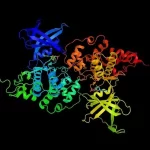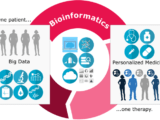
Integrating Bioinformatics Across Life Science Curricula: An Assessment of Educational Initiatives
October 14, 2024In the rapidly advancing field of life sciences, bioinformatics plays a critical role in analyzing complex biological data, driving discoveries in areas such as genomics, molecular biology, and disease research. Despite its growing importance, undergraduate exposure to bioinformatics is often limited to a few specialized courses. Recognizing this gap, many universities have initiated programs to integrate bioinformatics into life science curricula across multiple departments, aiming to provide a comprehensive learning experience. This essay explores the impact of such initiatives, focusing on assessment methods and outcomes related to student learning and faculty engagement.
The Need for a Broader Bioinformatics Curriculum
Bioinformatics, with its ability to process large-scale biological datasets, is essential for understanding gene interactions, evolutionary biology, and the molecular basis of diseases. However, in traditional life science programs, students typically encounter bioinformatics in isolated courses, leading to varying levels of understanding across disciplines such as microbiology, biochemistry, and molecular biology. To address this issue, universities have increasingly sought to integrate bioinformatics across the core life science curriculum, ensuring that students build a strong foundation from introductory courses and progressively develop more advanced bioinformatics skills as they move through their academic journey.
Assessment Strategy: Measuring Student Learning and Faculty Involvement
A critical component of bioinformatics integration initiatives is the evaluation of their effectiveness in improving student knowledge and confidence. Universities have adopted a multi-faceted assessment strategy to measure student progress and faculty perceptions, typically using student self-assessments, standardized content exams, and faculty surveys.
- Student Self-Assessment: Students’ confidence in solving bioinformatics problems tends to increase as they are exposed to multiple courses that incorporate bioinformatics. For example, after completing introductory courses, many students still feel uncertain about their skills. However, as they advance through more bioinformatics-inclusive courses, their confidence grows significantly. By the time students complete several such courses, they typically report a higher understanding of bioinformatics concepts and techniques.
- Content Exams: To objectively gauge learning outcomes, universities often administer standardized exams across various bioinformatics-inclusive courses. These exams assess both molecular biology and bioinformatics knowledge. Results typically show a marked improvement in students’ ability to answer bioinformatics-related questions, particularly after the second or third course exposure. While students generally show a solid grasp of molecular biology concepts, bioinformatics, being a relatively new field for many, shows the most significant learning gains. However, even after completing multiple courses, students may still find bioinformatics challenging, indicating room for improvement in teaching methods.
- Faculty Surveys: Faculty engagement is another critical factor in the success of bioinformatics initiatives. Faculty surveys generally indicate that students are better prepared for upper-division courses and have a stronger understanding of bioinformatics as they progress through the curriculum. Moreover, bioinformatics programs foster increased collaboration and communication among faculty from different departments, leading to more cohesive and comprehensive teaching practices.
Challenges and Opportunities for Improvement
Despite the positive outcomes of these bioinformatics initiatives, several challenges remain. For instance, while students demonstrate significant improvement, their overall performance on bioinformatics-specific questions often remains below expectations. This suggests that while integration across the curriculum is beneficial, formal, concentrated instruction—such as a dedicated bioinformatics course—may be necessary for students to achieve mastery.
Additionally, faculty development remains an essential focus. Faculty members with little prior experience in bioinformatics benefit greatly from training workshops and peer collaborations. However, those with more extensive expertise may feel that these programs offer only moderate gains. Ensuring that bioinformatics initiatives cater to the varying needs of faculty members is vital for continued success.
Conclusion: A Path Forward for Bioinformatics Education
The integration of bioinformatics into life science curricula offers students the opportunity to develop essential skills needed to navigate the increasingly data-driven world of biological research. By incorporating bioinformatics across a range of courses, universities can provide students with multiple exposures to the field, fostering both confidence and competence. The assessment strategies employed—such as student self-assessments, standardized content exams, and faculty surveys—demonstrate the positive impact of such initiatives on student learning and faculty collaboration. However, ongoing efforts are needed to address the challenges of bioinformatics education, ensuring that both students and faculty are equipped to thrive in this dynamic and vital area of life sciences.
Reference
Howard, D. R., Miskowski, J. A., Grunwald, S. K., & Abler, M. L. (2007). Assessment of a bioinformatics across life science curricula initiative. Biochemistry and Molecular Biology Education, 35(1), 16-23.


















